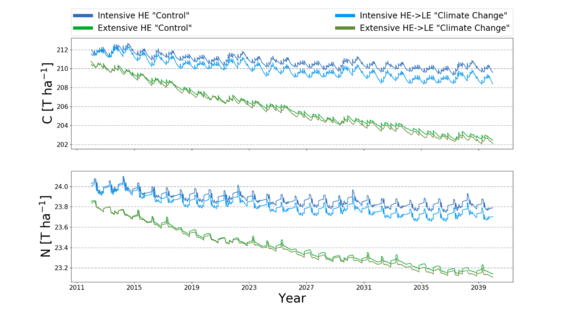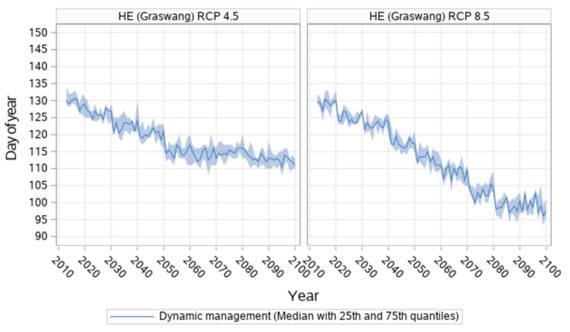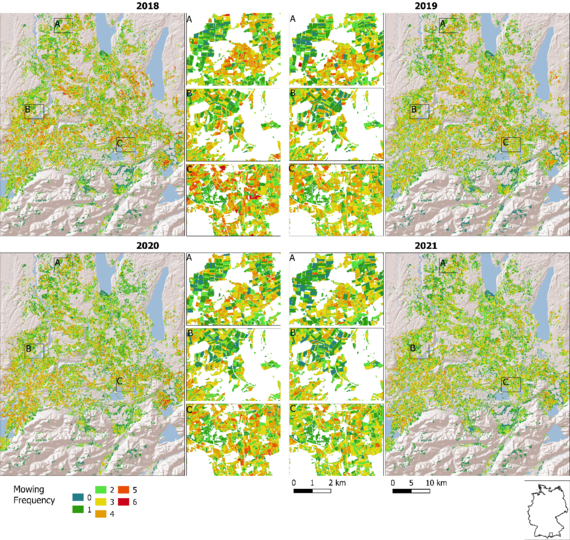Following first results of the plant-growth model validation and from scenario simulations regarding C and N losses of the SUSALPS grassland sites (Figure 1) the scenario analysis was extended with 100 years of climate change scenario simulations. The results so far revealed that the C and N stocks of these grassland soils show a tendency of decline with ongoing climate change. However, the amount of loss is strongly depended on the slurry regime. The vegetation is the main sink of available N and only minor environmental relevant N losses like nitrate leaching and N2O/NO emissions were simulated which is a result of substantial N2 emissions through denitrification.
We chose five global climate models (GCM) from the CMIP5 ensemble of the fifth IPCC assessment report for the climate change scenario analysis. On basis of these five models we created with the stochastic weather generator LARSWG climate scenarios reaching 100 years into the future (with two representative concentration pathways (RCP) 4.5 and 8.5). We created scenarios for the two SUSALPS sites Graswang and Fendt and the Önsingen grassland site in Switzerland. The selection of global climate models was based on models which are particularly suitable for the greater alpine region (a. o. GFDL-CM3, HADGEM2-ES and MIROC5).
With the assumption of shifting respectively longer vegetation periods due to climate change, a new dynamic acting “farmer” module was implemented in LandscapeDNDC. This module cuts and manures the grass on basis of the plant development and not on fixed dates. With this approach, it is possible to model management options which are adapted to climate change effects.
The need of a simulated management based on plant development was confirmed by first results (especially for RCP 8.5) of the first cutting event shift (Figure 2). The amplitude of this shift was validated with historical phenological datasets of the german weather service (DWD), which already showed a significant trend of changing first cutting events in the last 25 years.



